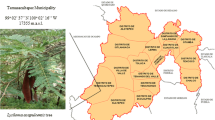Abstract
Abdominal angiostrongyliasis is a zoonotic infection produced by a metastrongylid intra-arterial nematode, Angiostrongylus costaricensis. Human accidental infection may result in abdominal lesions. The presence of the eggs in the tissues plays an essential role in morbidity of abdominal angiostrongyliasis. The objective of this study is to evaluate and compare the effects of lovastatin, phenanthrolin, and mebendazole on oviposition of A. costaricensis in a murine experimental model. Each group of 12 male Swiss mice (Mus musculus) was orally infected with 10 L3 of the “Santa Rosa” strain of A. costaricensis. Two control groups were established: (1) mice were infected and not treated; (2) noninfected and nontreated animals. The experimental groups received (1) lovastatin TL), at a daily dose of 250 mg/kg for 10 consecutive days 16 days after infection; (2) phenanthroline at a daily dose of 20 mg/kg for 5 consecutive days 21 days after infection; and (3) mebendazole at a daily dose of 5 mg/kg for 5 consecutive days 21 days after infection. There was no significant inhibition of oviposition for lovastatin- and mebendazole-treated animals, whereas phenanthroline was associated with the lowest averages of larviposition per postinfection day and significant reduction of mortality.

Similar content being viewed by others
References
Agostini AA, Marcolan AAM, Lisot JMC, Lisot JUF (1984) Angiostrongilíase abdominal, estudo anátomo patológico de quatro casos observados no Rio Grande do Sul, Brasil. Mem Inst Oswaldo Cruz 79:443–445
Bender AL, Maurer RL, Silva MC, Ben R, Terraciano PB, Silva AC, Graeff-Teixeira C (2003) Eggs and reproductive organs of female Angiostrongylus costaricensis are more intensively recognized by human sera from acute phase in abdominal angiostrongyliasis. Rev Soc Bras Med Trop 36:449–454
Cespedes R, Salas J, Mekbel S, Troper L, Múllner F, Morera P (1967) Granulomas entéricos y linfáticos con intensa eosinofilia tisular producidos por un strongilídeo (Strongylata). Acta Méd Costarric 10:235–255
Cheever AW, Andrade ZA (1967) Pathological lesions associated with Schistosoma mansoni infection in man. Trans R Soc Trop Med Hyg 61:626–639
Day TA, Chen GZ (1998) The metalloprotease inhibitor 1,10-phenanthroline affects Schistosoma mansoni motor activity, egg laying and viability. Parasitology 116:319–325
Geiger SM, Laitano AC, Sievers-Tostes C, Agostini AA, Schutz-Key H, Graeff-Teixeira C (2001) Detection of the acute phase of abdominal angiostrongyliasis with a parasite-specific IgG enzyme linked immunosorbent assay. Mem Inst Oswaldo Cruz 96:515–518
Graeff-Teixeira C, Avila-Pires FD, Machado RCC, Camillo-Coura L, Lenzi HL(1990) Identificação de roedores silvestres como hospedeiros do Angiostrongylus costaricensis no Sul do Brasil. Rev Inst Med Trop Sao Paulo 32:147–150
Hawking F (1979) Diethylcarbamazine and new compounds for the treatment of filariasis. Adv Pharmacol 16:129–194
Hayashi M (1987) Studies on chemotherapy of parasitic helminths. XXX. Clinical and pathological changes in mice infected with Angiostrongylus cantonensis and treatment with mebendazole and bethametasone. Jpn J Parasitol 36:80–87
McKerrow JH (1989) Parasite proteases. Exp Parasitol 68:111–115
Mentz MB, Graeff-Teixeira C (2003) Drug trials for treatment of human angiostrongyliasis—a review. Rev Inst Med Trop Sao Paulo 45:179–184
Mentz MB, Graeff-Teixeira C, Garrido CT (2004) Treatment with mebendazole is not associated with distal migration of adult Angiostrongylus costaricensis in the murine experimental infection. Rev Inst Med Trop Sao Paulo 46:73–75
Mojon M (1994) Angiostrongylose humaine à Angiostrongylus costaricensis. Bull Acad Natl Med 178:633–645
Morera P (1973) Life history and redescription of Angiostrongylus costaricensis (Morera & Cespedes, 1971). Am J Trop Med Hyg 22:613–621
Morera P, Bontempo I (1985) Acción de algunos antihelminticos sobre Angiostrongylus costaricensis. Rev Med Hosp Nac Niños Costa Rica 20:165–174
Morrison DD, Vandewaa EA, Bennet JL (1986) Effects of steroids and steroid synthesis inhibitors on fecundity of Schistosoma mansoni in vitro. J Chem Ecol 12:1901–1908
Terada M, Sano M (1989) Protective resistance against reinfection with Angiostrongylus costaricensis in mice treated with larvicidal anthelmintics after primary infection. Jpn J Parasitol 38:344–352
Terada M, Ishii AJ, Dharejo AM, Hayashi M, Sano M (1987) Studies on chemotherapy of parasitic helminths. XXVIII. In vivo efficacy of milbeycin D against larval stages of Angiostrongylus cantonensis and Angiostrongylus costaricensis. Jpn J Pharmacol 36:24–29
Terada M, Ishii AJ, Sano M (1991) Studies on chemotherapy of parasitic helminths. XXXVI. Indicative changes for experimental chemotherapy in mice infected with Angiostrongylus costaricensis. Jpn J Parasitol 40:415–423
Terada M, Tungtrongchtr A, Ishih AI, Sano M (1992) Effects of mebendazole on abdominal angiostrongyliasis in mice after worm maturation: preliminary trials. Jpn J Parasitol 41:481–486
Terada M, Ishii A, Tungtrongchtr A, Sano M, Shomura T (1993a) Effects of PF1022A on developing larvae of Angiostrongylus costaricensis in mice, with special reference to route, dose and formulation. Jap J Parasitol 42 (3):199–210
Terada M, Kino H, Akyol CV, Sano M (1993b) Effects of mebendazole on Angiostrongylus costaricensis in mice with special reference to treatment. Parasitol Res 79:441–443
Tesh RB, Ackerman LJ, Dietz WH, Williams JA (1973) Angiostrongylus costaricensis in Panama. Prevalence and pathological findings in wild rodents infected with the parasite. Am J Trop Med Hyg 22:348–356
Tungtrongchitr A, Ishii A, Terada M, Radomyos P (1993a) Effects of sensitization on efficacy of mebendazole in mice infected with adult Angiostrongylus costaricensis. Trop Med Parasitol 44:322–326
Tungtrongchitr A, Ishii A, Terada M (1993b) Effects of mebendazole given intermittently or successively with various doses and intervals on murine Angiostrongyliasis costaricensis after worm maturation. Jpn J Parasitol 42:321–330
Vandewaa EA, Mills G, Chen G, Foster LA, Bennet JL (1989) Physiological role of HMG-CoA reductase in regulating egg production by Schistosoma mansoni. Am J Physiol 257:618–625
Acknowledgements
We thank the staff at PUCRS Biomedical Parasitology Group. Financial support was given by CNPq-Brazil: C.Graeff-Teixeira is recipient of a PQ-1D fellowship and bench grant 307872/2004-1. Thanks to Luciana Nunes for help with the statistical analysis and Hedy Hoffmann for critical reviewing of the English language.
Author information
Authors and Affiliations
Corresponding author
Rights and permissions
About this article
Cite this article
Bohrer Mentz, M., Dallegrave, E., Agostini, A. et al. Phenantroline, lovastatin, and mebendazole do not inhibit oviposition in the murine experimental infection with Angiostrongylus costaricensis . Parasitol Res 100, 379–382 (2007). https://doi.org/10.1007/s00436-006-0271-3
Received:
Accepted:
Published:
Issue Date:
DOI: https://doi.org/10.1007/s00436-006-0271-3




